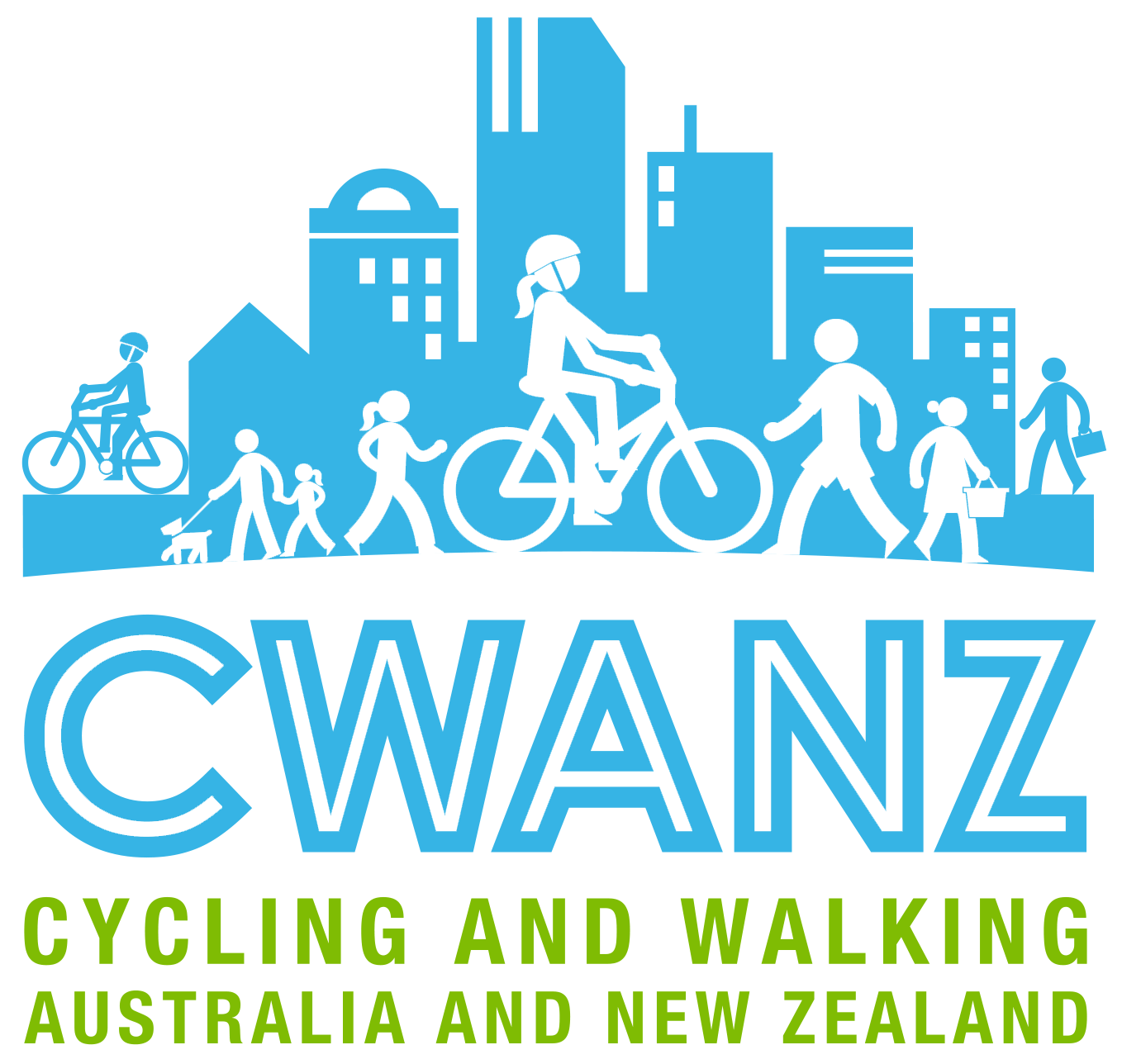Resources
This page contains some key resources on walking and cycling, including an archive of the documents produced by the Australian Bicycle Council.
| Date Added | |||
|---|---|---|---|
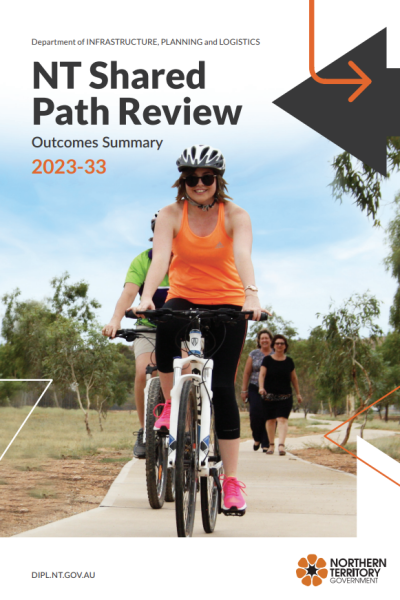 |
Northern Territory shared path network reviews Department of Infrastructure, Planning and Logistics (DIPL), Northern Territory The Department of Infrastructure, Planning and Logistics (DIPL) has completed a review of Northern Territory Government (NTG) owned shared paths across Greater Darwin, Katherine, Tennant Creek and Alice Springs. The review is key to continuing strategic development of shared paths in line with stakeholder and community needs for the next 10 years. The purpose of the review was to assess the existing NTG shared path networks and provide recommendations for:
A number of key considerations guided the review including efficiency, safety and connectivity. |
11/12/2023 | View |
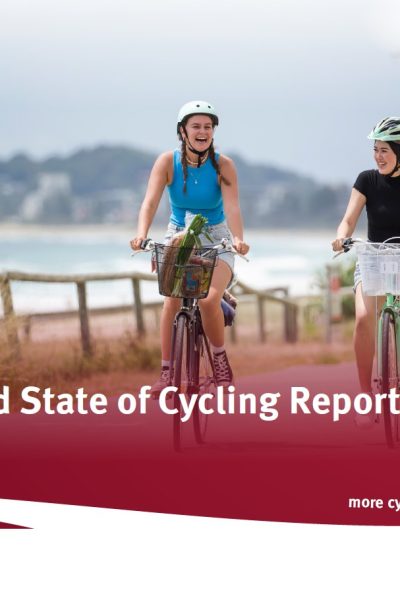 |
Queensland State of Cycling Report 2022 Department of Transport and Main Roads, Queensland The Queensland State of Cycling Report 2022 tracks the Queensland Government’s progress towards achieving the vision of ‘more cycling, more often’, to be updated every 2 years. This is the third report under the Queensland Cycling Strategy, which is helping achieve the Queensland Government's objectives for the community. The Queensland State of Cycling Report 2019 and Queensland State of Cycling Report 2017 are also available. The Queensland Cycling Strategy 2017-2027 and Queensland Cycling Action Plan are also available. |
06/10/2023 | View |
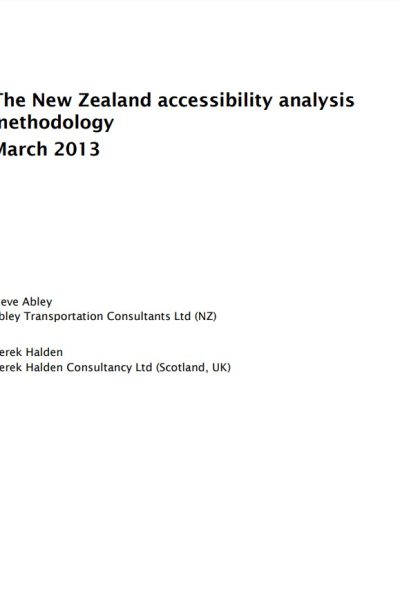 |
Research Report 512 The New Zealand accessibility analysis methodology Waka Kotahi NZ Transport Agency This research considers land use and transport accessibility drawing on international practice from the UK, Europe, USA and Australia. An objective of the research was to define accessibility and propose a methodology for how accessibility could be measured and quantified in New Zealand, both at a neighbourhood or a wider area such as a suburb, city or region. The result of the research was an understanding of other countries’ experiences developing and setting accessibility policy and the success of those approaches. This is important because if New Zealand chooses to set explicit accessibility policy, the research explains how that might be best achieved. A second result of the research was the development of a new methodology for calculating accessibility that draws on overseas and improved practice. The new methodology quantitatively measures accessibility taking into consideration different modes of travel (walk, cycle, private motor vehicle etc), travel behaviour (ideally using logistic decay functions), destinations (origin or destination based), activities (consumed or supplied) and multiple opportunities (saturations). The calculation methodology was piloted on Christchurch (a city of some 350,000 people) and the accessibility of every household quantified to a variety of destinations including doctors, supermarkets and schools. Keywords: accessibility, cycling, GIS, indicators, journey planning, methodology, modelling, networks, New Zealand, public transport, transport, walking |
19/05/2023 | View |
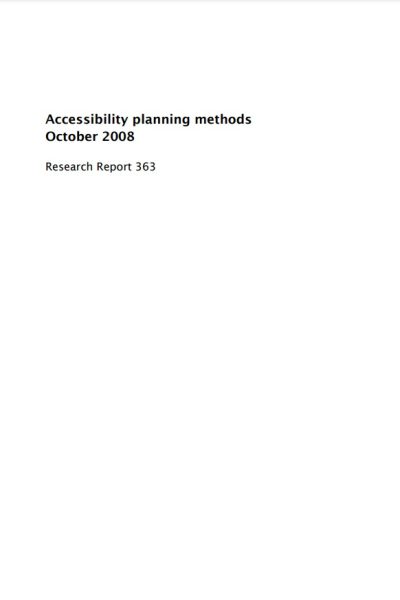 |
Research Report 363 Accessibility planning methods Waka Kotahi NZ Transport Agency This research investigated the applicability of accessibility planning in New Zealand as a tool for assessing and improving personal access to essential services for all New Zealanders. It canvassed international accessibility planning practices in England, the Netherlands and Southern California to understand the various drivers for its introduction and the different approaches taken in its implementation. All three case studies share the goal of improving individuals’ access to activity centres and recognise that accessibility planning is best undertaken at the local level with some form of central government guidance and monitoring. The English comprehensive accessibility planning framework has been adapted to New Zealand’s existing social services and local government legislative and institutional environment and the recently legislated changes to the government land transport sector. The resulting recommended framework employed a collaborative approach to assess and improve people’s accessibility to employment, food shopping, health, education and social services across New Zealand. All levels of government would participate in the assessment of accessibility, development of priorities, indicators and action plans and monitor progress against outcomes, within government frameworks. Transport actions developed by regional accessibility partnerships to address regional problems would feed directly into their regional land transport programmes for prioritisation for funding. |
19/05/2023 | View |
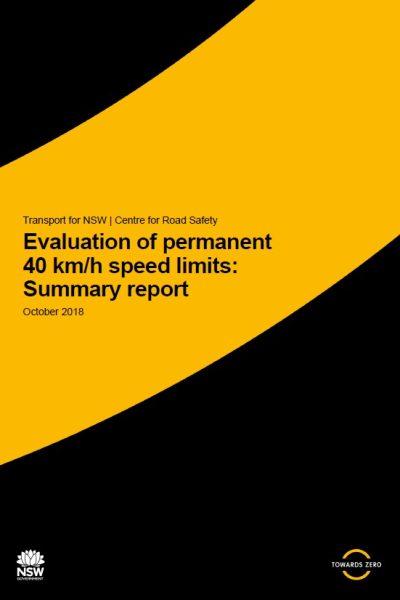 |
Evaluation of permanent 40km/h speed limits: Summary report Transport for NSW |
17/05/2023 | View |
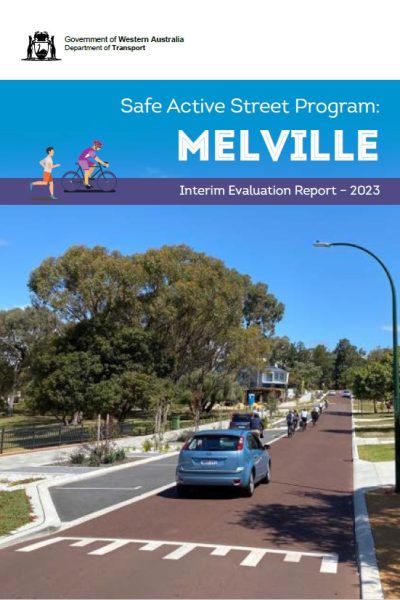 |
Safe Active Streets Pilot Program Evaluation Department of Transport WA The Safe Active Street (SAS) Program’s vision is to create shared street spaces that provide a convenient travel option within a safe and attractive environment for people riding and walking of all ages and abilities. To achieve the vision of the SAS Program the following objectives have been established:
The SAS Pilot Program is being evaluated in line with DoT’s SAS Pilot Program Evaluation Plan, which has adopted a summative evaluation framework that considers impacts, cost effectiveness and comparability between projects. The SAS Pilot Program Evaluation Plan clearly details in an Outcomes Measurement Framework the specific indicators, targets, and data sources to adequately evaluate the program. |
05/04/2023 | View |
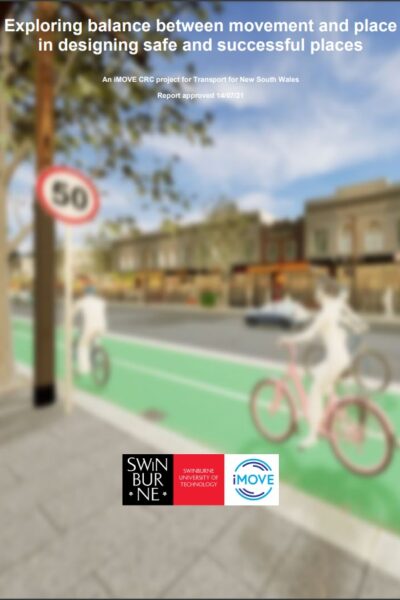 |
Movement & Place and the design of safe & successful places iMove Future Transport Strategy 2056 sets the 40-year vision and framework for customer mobility in NSW. As part of this vision, the Strategy recognises the importance of shaping our future transport spaces to ensure balance between movement and place. To support the development of successful places, the Movement & Place Framework promotes the urban design principles that allow local communities to come together in places with vehicle movement, thereby supporting social and economic growth. The purpose of this research is to use the Movement & Place Framework and Safe System approach to develop a series of evidence-based design principles and guidelines for balancing vehicle movement and place-making, to enhance the development of safe and successful places. Using virtual reality (VR) and pedestrian tracking technology, the project aims to better understand relationships between pedestrian-oriented urban design elemental variables and safe system treatments to improve the human experience and safety of pedestrians. Outcomes from this research will facilitate the implementation and evaluation of successful places in collaboration with local councils to determine the real-life impact of different place-making and safety variables. |
14/06/2022 | View |
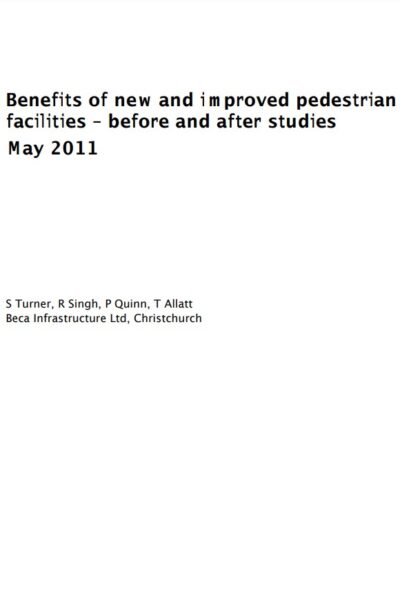 |
Research report 436 Benefits of new and improved pedestrian facilities - before and after studies Waka Kotahi NZ Transport Agency Walking is an essential mode of transport. New and improved pedestrian facilities promote walking and provide greater access and mobility within our communities. The NZ Transport Agency has recently updated the procedures for the evaluation of pedestrian improvement projects. The benefit factor applying to new pedestrian trips was increased from $0.50 to $2.70/km, making pedestrian facility improvement projects more economically viable. Thus, estimating the increase in pedestrian flows (as opposed to simply recording existing pedestrian flows) is now important in the economic evaluation of new or improved facilities. This research analysed case studies at eight New Zealand sites where the implementation of new pedestrian facilities (or the improvement of existing facilities) led to increased pedestrian usage and improved perception of the sites. The study recorded pedestrian rates both before and after facility implementation, and analysed accompanying factors such as safety, delay and directness. It also tried to develop an expected pedestrian-usage model, based on before and after data analysis, for planners and funding agents to use when planning new or improved facilities, and for use in project evaluation. Finally, a monitoring database containing before and after pedestrian count data for various new and improved pedestrian facilities, along with a list of the accompanying factors mentioned above, was developed for future use. |
07/04/2022 | View |
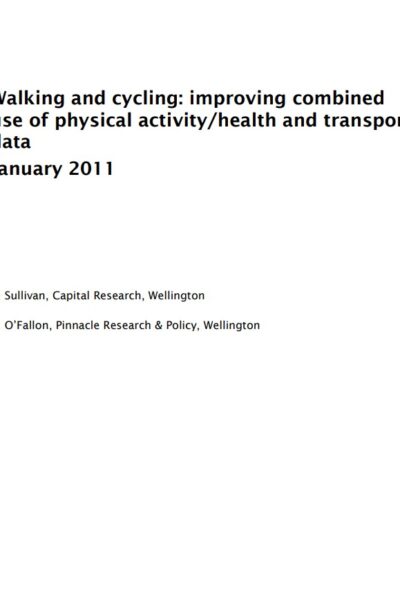 |
Research Report 435 Walking and cycling: improving combined use of physical activity/health and transport data Waka Kotahi NZ Transport Agency SPARC's Active New Zealand Survey (ANZS) is a high-quality nationwide survey of over 4000 adults collected through face-to-face interviews over 12 months in 2007/08. Although collected mainly to measure levels of sport/recreation activity and to quantify physical activity in general, it includes data of interest to the transport sector on walking and cycling.
|
07/04/2022 | View |
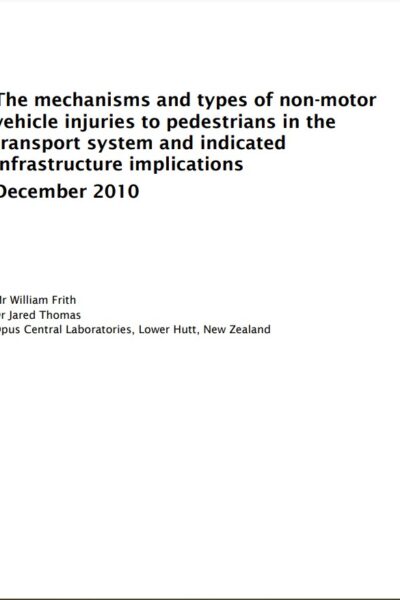 |
Research Report 431 The mechanisms and types of non-motor vehicle injuries to pedestrians in the transport system and indicated infrastructure implications Waka Kotahi NZ Transport Agency Research carried out in 2008-2010 examined the quantum and causes of non-motor vehicle injuries to pedestrians through a structured interview survey. Pedestrians sustaining injuries in locations away from the road network (eg in parks) were excluded, as the emphasis was on the role of road and footpath features. The highest proportion of trips and falls (34%) was sustained while stepping over a kerb. A further 18% were caused by irregularities in the path or road surface. Factors that amplified the severity of injuries included the road or path surface, pedestrians' inattention, type of footwear worn, and whether walking or running. Two main issues were identified from the study. These were:
The study recommends improving the definition of kerbing in key pedestrian areas and improving the maintenance regime of footpaths and roads used by pedestrians, eg crossings. The study also found that it is necessary to instigate research to provide improved data and analysis tools to prioritise such countermeasures vis-a-vis other uses of road safety funds and improved data for input into such analysis tools. Further, a national guide is needed for pedestrian road safety audits and inspections covering both motor vehicle and non-motor vehicle risk. |
07/04/2022 | View |
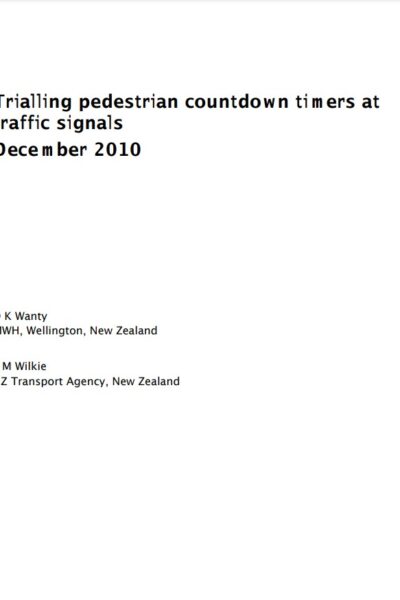 |
Research report 428 Trialling pedestrian countdown timers at traffic signals Waka Kotahi NZ Transport Agency The overall research objective was to evaluate changes in pedestrian safety and traffic efficiency from installing pedestrian countdown timers. The study analysed pedestrian behaviour and safety before and after the installation of a trial countdown timer at the intersection of Queens Street, Bunny Street and Margaret Street in Lower Hutt in July 2007. The results were compared with the 2006/07 trial at the Queen Street/Victoria Street intersection in Auckland CBD and showed very different results. The Auckland city trial indicated that, if placed in suitable locations, pedestrian countdown signals were associated with pedestrian behaviour change that enhanced safety. This study in Lower Hutt demonstrated that the observed pedestrian safety decreased as the percentage of both late starters and late finishers increased, although this was likely to be due to the nature of the intersection with one particularly long diagonal crossing coupled with the allocated phase times. In contrast, perceived pedestrian safety increased with the installation of the countdown timers. |
07/04/2022 | View |
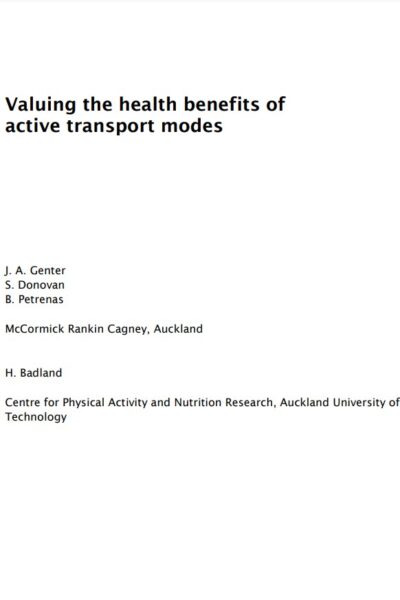 |
Research Report 359 Valuing the health benefits of active modes Waka Kotahi NZ Transport Agency This report seeks to provide a per-kilometre value for the health benefits of active transport modes (such as walking and cycling) that is compatible with the Land Transport New Zealand Economic Evaluation Manual Volume 2 (EEM2). The first two sections of the report begin by explaining the scope of the project and the background. Section 3 investigates the evidence of the connection between physical activity and health outcomes. Section 4 clarifies the role of active transport modes as physical activity, and reports the New Zealand-specific data about active transport mode engagement. Section 5 gives a brief comparative summary of the literature review of cost-benefit analyses and valuation techniques used overseas to value the health benefits of active modes. This report uses population attributable fractions (PAF) to estimate the annual burden of mortality and morbidity costs per inactive adult. Annual estimates of the costs of inactivity are applied to the New Zealand adult population using a weighted sum to establish a per-kilometre value for each mode. The valuation presented in this report is limited by a poverty of data, but the final values are considered to be a reasonable estimate of the health benefits of active modes. While further research is recommended to obtain more precise estimates of the costs of inactivity in New Zealand, it is considered that the values presented in this report are a sound interim estimate for inclusion in the EEM2. |
07/04/2022 | View |
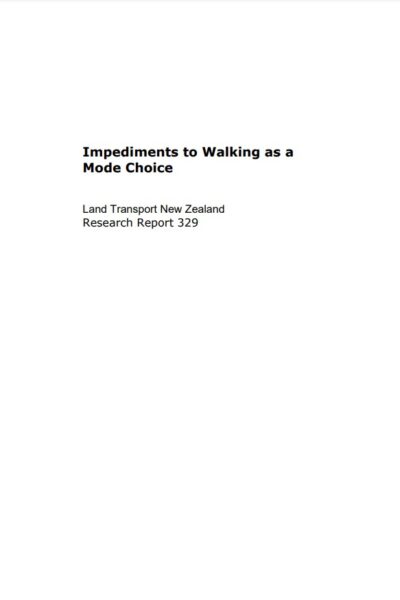 |
Research Report 329 Impediments to walking as a mode choice Waka Kotahi NZ Transport Agency Conducted in 2005, this study evaluates a case-control design of contrasts between walkers and drivers to address factors influencing the uptake of walking as a mode choice. With samples drawn from Auckland and Wellington, New Zealand, this research uses a 62-item survey to examine a number of factors: fear of crime; trip-chaining/car dependency; weather; distance/time; social pressure, fatigue and fitness, parking charges, enjoyment of walking, inconvenience, and geography. To avoid factors such as car dependency or the inability to walk, participants are selected because they live a short distance from public transport parking facilities. The group of drivers demonstrate an irregular break in car dependency by driving their cars to the station in order to use public transport. The results indicate that for parking facilities, convenience creates demand. Poor weather has an influence on the decision to drive, and fine weather improves the likelihood of walking. Previous studies claim decisions to walk are impeded by certain factors. While location effects are observed between the groups, these results suggest that such factors are in fact inconsequential. |
07/04/2022 | View |
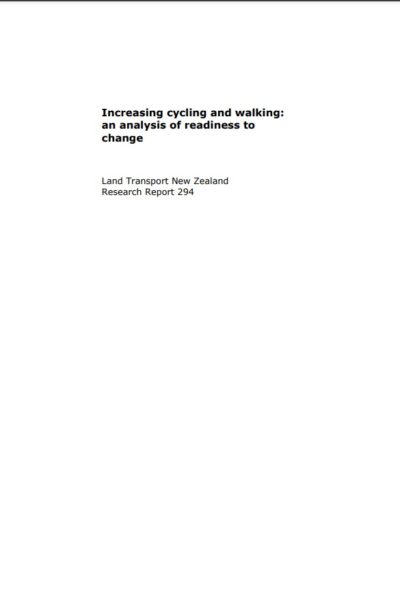 |
Research Report 294 Increasing cycling and walking: an analysis of readiness to change Waka Kotahi NZ Transport Agency In 2003, Sport and Recreation New Zealand (SPARC) and the Cancer Society of New Zealand commissioned a major social marketing survey to segment adult New Zealanders in terms of physical activity and healthy eating habits. The questionnaire included several transport-related questions. The resulting ‘Obstacles to Action’ database contains responses from over 8000 people aged 16 or over. |
07/04/2022 | View |
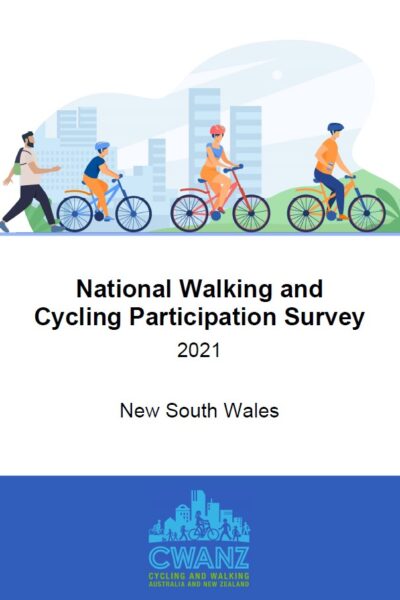 |
National Walking and Cycling Participation Survey 2021 - NSW Cycling and Walking Australia and New Zealand The National Walking and Cycling Participation Survey provides insight into walking and cycling activity across Australia and is a successor to the National Cycling Participation Survey which was conducted biennially from 2011 to 2019. |
02/09/2021 | View |
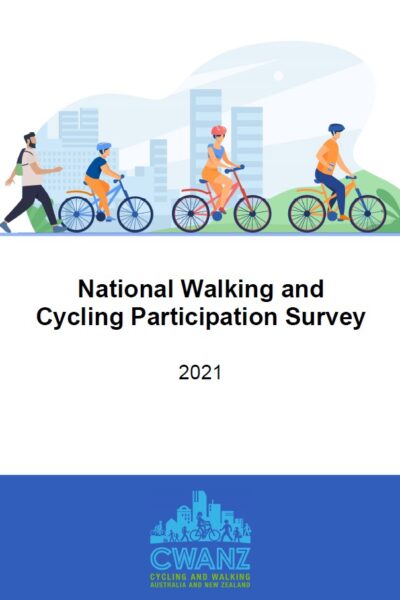 |
National Walking and Cycling Participation Survey 2021 - Final Report Cycling & Walking Australia and New Zealand The National Walking and Cycling Participation Survey (NWCPS) provides insight into walking and cycling activity across Australia and is a successor to the National Cycling Participation Survey which was conducted biennially from 2011 to 2019. |
02/09/2021 | View |
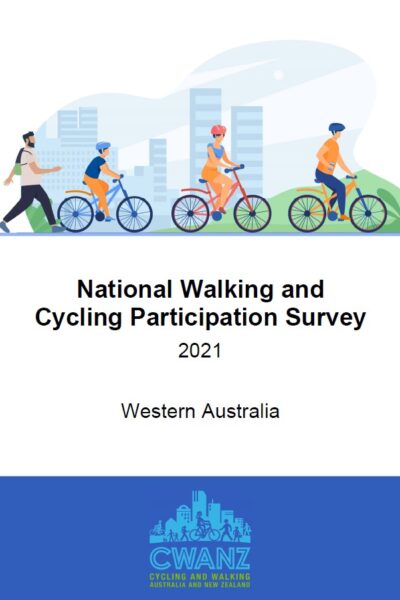 |
National Walking and Cycling Participation Survey 2021 - WA Cycling and Walking Australia and New Zealand The National Walking and Cycling Participation Survey (NWCPS) provides insight into walking and cycling activity across Australia and is a successor to the National Cycling Participation Survey which was conducted biennially from 2011 to 2019. |
31/08/2021 | View |
 |
National Walking and Cycling Participation Survey 2021 - Victoria Cycling and Walking Australia and New Zealand The National Walking and Cycling Participation Survey (NWCPS) provides insight into walking and cycling activity across Australia and is a successor to the National Cycling Participation Survey which was conducted biennially from 2011 to 2019. |
31/08/2021 | View |
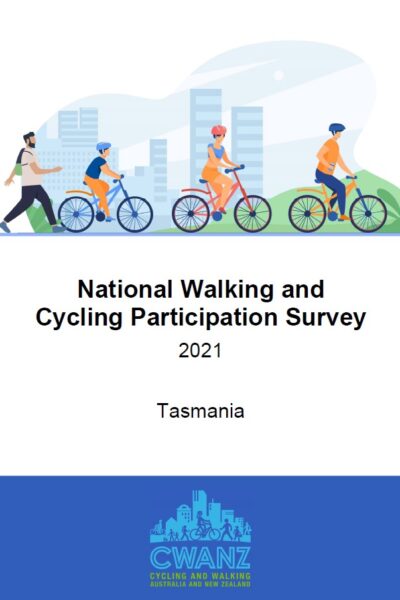 |
National Walking and Cycling Participation Survey 2021 - Tasmania Cycling and Walking Australia and New Zealand The National Walking and Cycling Participation Survey (NWCPS) provides insight into walking and cycling activity across Australia and is a successor to the National Cycling Participation Survey which was conducted biennially from 2011 to 2019. |
31/08/2021 | View |
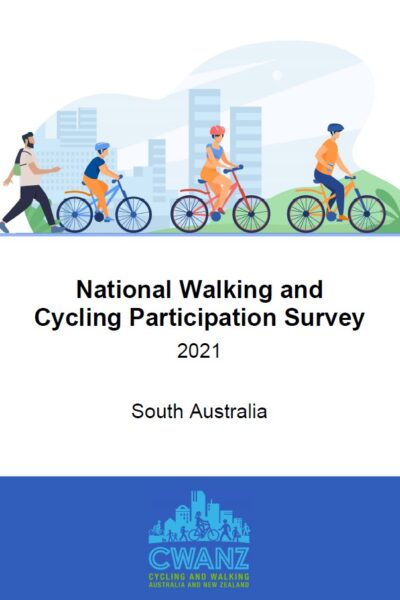 |
National Walking and Cycling Participation Survey 2021 - SA Cycling and Walking Australia and New Zealand The National Walking and Cycling Participation Survey (NWCPS) provides insight into walking and cycling activity across Australia and is a successor to the National Cycling Participation Survey which was conducted biennially from 2011 to 2019. |
31/08/2021 | View |
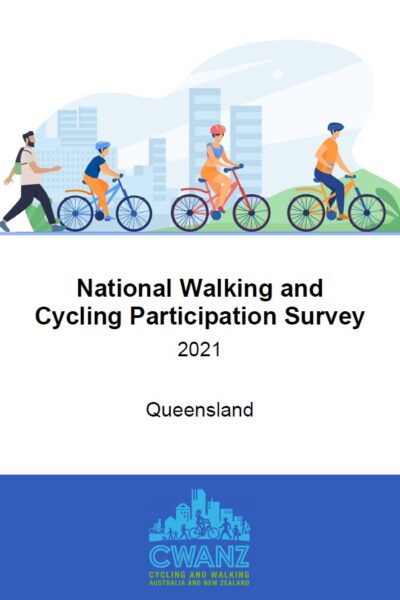 |
National Walking and Cycling Participation Survey 2021 - Queensland Cycling and Walking Australia and New Zealand The National Walking and Cycling Participation Survey (NWCPS) provides insight into walking and cycling activity across Australia and is a successor to the National Cycling Participation Survey which was conducted biennially from 2011 to 2019. |
31/08/2021 | View |
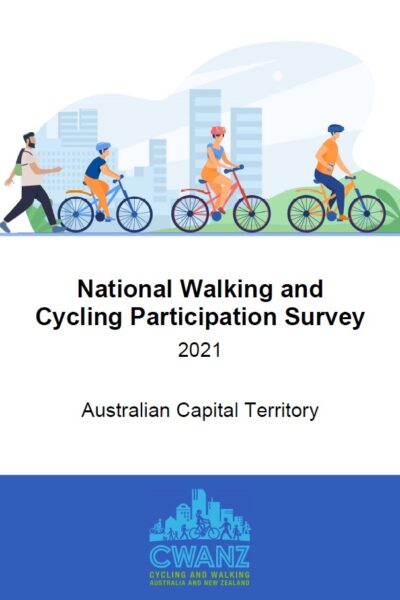 |
National Walking and Cycling Participation Survey 2021 - ACT Cycling and Walking Australia and New Zealand The National Walking and Cycling Participation Survey (NWCPS) provides insight into walking and cycling activity across Australia and is a successor to the National Cycling Participation Survey which was conducted biennially from 2011 to 2019. |
31/08/2021 | View |
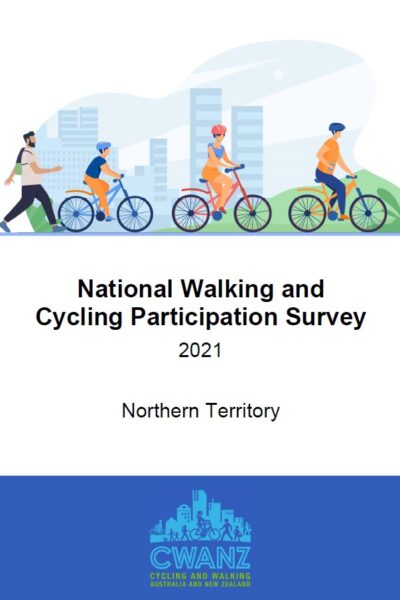 |
National Walking and Cycling Participation Survey 2021 - NT Cycling and Walking Australia and New Zealand The National Walking and Cycling Participation Survey (NWCPS) provides insight into walking and cycling activity across Australia and is a successor to the National Cycling Participation Survey which was conducted biennially from 2011 to 2019. |
31/08/2021 | View |
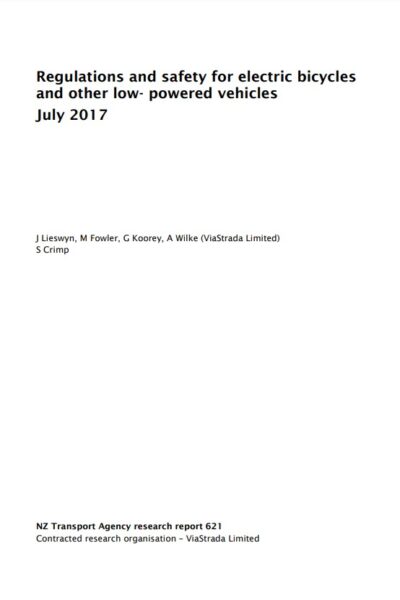 |
Research Report 621: Regulations and Safety for Electric Bicycles and Other Low-powered Vehicles Waka Kotahi NZ Transport Agency This research report presents a review of overseas legislation, technology trends, market and safety analyses for low-powered, low-speed vehicles. |
13/08/2021 | View |
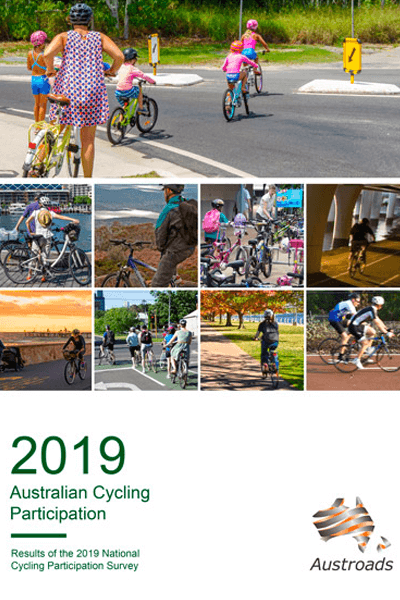 |
National Cycling Participation Survey (NCPS) Austroads The National Cycling Participation Survey (NCPS) is a standardised survey that has been repeated biennially since March/April 2011, with minor changes to the survey structure between 2011 and 2013. The NCPS provides data on cycling participation at a national level and allows for estimates of participation for each state and territory, and the capital cities and non-capital areas within each state and territory. |
20/05/2021 | View |
